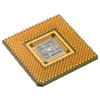| 24 | | Since version 0.9, Trac supports both [http://sqlite.org/ SQLite] and |
| 25 | | [http://www.postgresql.org/ PostgreSQL] as database backends. The default |
| 26 | | is to use SQLite, which is probably sufficient for most projects. The database file |
| 27 | | is then stored in the environment directory, and can easily be |
| 28 | | [wiki:TracBackup backed up] together with the rest of the environment. |
| | 24 | Since version 0.9, Trac supports both [http://sqlite.org/ SQLite], |
| | 25 | [http://www.postgresql.org/ PostgreSQL] and [http://mysql.com/ MySQL] as |
| | 26 | database backends. The default is to use SQLite, which is probably sufficient |
| | 27 | for most projects. The database file is then stored in the environment |
| | 28 | directory, and can easily be [wiki:TracBackup backed up] together with the |
| | 29 | rest of the environment. |
| 35 | | If you want to use PostgreSQL instead, you'll have to use a different |
| 36 | | connection string. For example, to connect to a database on the same |
| 37 | | machine called `trac`, that allows access to the user `johndoe` with |
| 38 | | |
| | 36 | If you want to use PostgreSQL or MySQL instead, you'll have to use a |
| | 37 | different connection string. For example, to connect to a PostgreSQL |
| | 38 | database on the same machine called `trac`, that allows access to the |
| | 39 | user `johndoe` with the password `letmein`, use: |
| | 51 | |
| | 52 | And make sure PostgreSQl DB name is "trac". What worked for me: |
| | 53 | And didn't work uppercase trac-user-name |
| | 54 | {{{ |
| | 55 | sudo su - postgres -c createdb trac |
| | 56 | sudo su - postgres -c psql trac |
| | 57 | CREATE USER trac-user-name WITH PASSWORD 'trac-pass-name'; |
| | 58 | }}} |
| | 59 | |
| | 60 | (Just to remind you, if you don't have a sudo/su setup, you just need to do the createdb and psql statements. That threw me the first couple of times I read this.) |
| | 61 | |
| | 62 | == Source Code Repository == |
| | 63 | |
| | 64 | You'll first have to provide the ''type'' of your repository (e.g. `svn` for Subversion, |
| | 65 | which is the default), then the ''path'' where the repository is located. |
| | 66 | |
| | 67 | If you don't want to use Trac with a source code repository, simply leave the ''path'' empty |
| | 68 | (the ''type'' information doesn't matter, then). |
| | 69 | |
| | 70 | For some systems, it is possible to specify not only the path to the repository, |
| | 71 | but also a ''scope'' within the repository. Trac will then only show information |
| | 72 | related to the files and changesets below that scope. The Subversion backend for |
| | 73 | Trac supports this; for other types, check the corresponding plugin's documentation. |
| | 74 | |
| | 75 | Example of a configuration for a Subversion repository: |
| | 76 | {{{ |
| | 77 | [trac] |
| | 78 | repository_type = svn |
| | 79 | repository_dir = /path/to/your/repository |
| | 80 | }}} |
| | 81 | |
| | 82 | The configuration for a scoped Subversion repository would be: |
| | 83 | {{{ |
| | 84 | [trac] |
| | 85 | repository_type = svn |
| | 86 | repository_dir = /path/to/your/repository/scope/within/repos |
| | 87 | }}} |
